-
 bitcoin
bitcoin $114684.631706 USD
-0.87% -
 ethereum
ethereum $4228.677447 USD
1.58% -
 bnb
bnb $1294.880693 USD
-1.16% -
 tether
tether $1.000819 USD
-0.02% -
 xrp
xrp $2.605138 USD
2.79% -
 solana
solana $209.908690 USD
5.89% -
 usd-coin
usd-coin $0.999903 USD
-0.03% -
 dogecoin
dogecoin $0.213423 USD
2.93% -
 tron
tron $0.322721 USD
-0.10% -
 cardano
cardano $0.727247 USD
3.66% -
 hyperliquid
hyperliquid $42.339456 USD
6.05% -
 chainlink
chainlink $19.910811 USD
5.16% -
 ethena-usde
ethena-usde $1.000557 USD
0.00% -
 stellar
stellar $0.349734 USD
2.69% -
 bitcoin-cash
bitcoin-cash $543.848687 USD
-0.21%
How is the liquidation price for TRON (TRX) contracts calculated?
The liquidation price for TRON (TRX) futures depends on entry price, leverage, position size, and maintenance margin, with higher leverage bringing liquidation closer to entry.
Sep 24, 2025 at 06:54 pm
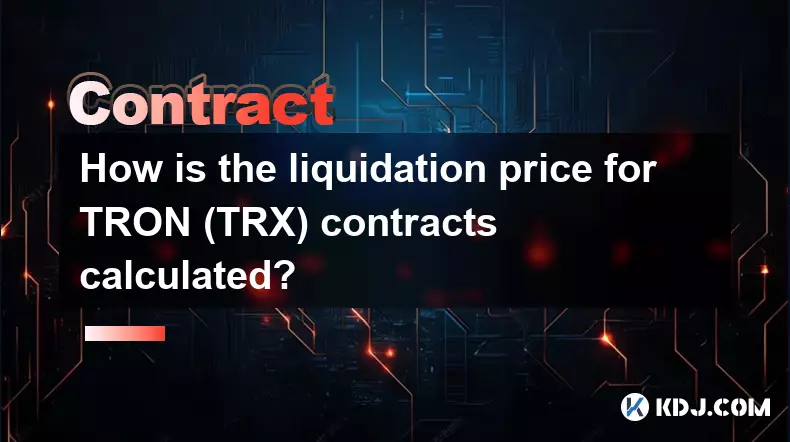
Liquidation Price Mechanics for TRON (TRX) Futures Contracts
1. The liquidation price in TRON-based futures contracts is determined by the point at which a trader’s margin balance falls below the required maintenance margin. This occurs when losses on an open position deplete available collateral to a level that the exchange deems too risky to sustain. For TRX contracts, this calculation depends on several variables including entry price, leverage, position size, and the current market funding rate.
2. Exchanges hosting TRX perpetual or futures contracts use a standardized formula to compute liquidation thresholds. The base equation factors in the initial margin, maintenance margin ratio specific to the platform, and the notional value of the position. As prices move against the trader, unrealized losses reduce equity. When equity equals the maintenance margin, liquidation triggers automatically.
3. Different platforms may apply slight variations in their liquidation models. Some use mark price instead of last traded price to prevent manipulation during volatile swings. The mark price incorporates index data and funding rates, ensuring more accurate liquidation levels. If the mark price hits the liquidation threshold, the system closes the position regardless of order book activity.
4. Leverage plays a critical role in determining how close the liquidation price is to the entry. Higher leverage magnifies both gains and losses, bringing the liquidation point nearer to the opening price. A 50x leveraged TRX long position could be liquidated with a 2% drop, whereas a 5x leveraged trade might withstand a 20% adverse move before reaching the same risk level.
5. Traders can estimate their liquidation price using built-in calculators provided by exchanges like BitMEX, Bybit, or OKX. These tools allow users to input parameters such as contract type, direction (long or short), entry price, size, and leverage to generate approximate liquidation levels. Accuracy depends on correct inputs and up-to-date maintenance margin settings from the exchange.
Factors Influencing TRX Contract Liquidations
1. Market volatility directly affects how quickly positions approach liquidation. Sudden price spikes or crashes in TRX value—often triggered by macroeconomic events, whale movements, or protocol upgrades—can cause rapid depletion of margin balances. High volatility increases slippage during liquidation execution, sometimes resulting in partial or full loss beyond expected levels.
2. Funding rates in perpetual contracts influence effective holding costs. In periods of strong long dominance, funding becomes positive, meaning longs pay shorts. While this doesn’t alter the liquidation price directly, prolonged negative returns due to high funding can erode account equity over time, indirectly increasing liquidation risk for undercapitalized positions.
3. Index composition matters because TRX contracts are often pegged to a multi-exchange index price. If major exchanges report divergent TRX/USDT prices, the index may lag behind spot markets momentarily. During fast-moving conditions, this discrepancy can lead to premature or delayed liquidations depending on the direction of the deviation.
4. Isolated vs. cross-margin modes change exposure dynamics. With isolated margin, only the allocated funds are at risk, making liquidation calculations straightforward. Cross-margin uses the entire wallet balance as collateral, delaying liquidation until total equity drops below maintenance requirements. However, cross-mode increases systemic risk if other positions perform poorly simultaneously.
Risk Management Strategies Around TRX Liquidation
1. Setting stop-loss orders near but above the calculated liquidation price helps preserve capital while allowing room for normal price fluctuations. Unlike forced liquidations, stop-losses execute at predefined levels chosen by the user, offering greater control over exit points even if they require active monitoring.
2. Monitoring wallet balance and unrealized PnL in real-time allows traders to add margin before approaching dangerous thresholds. Most platforms send alerts via email or app notifications when equity nears maintenance levels. Acting early prevents automatic closure and maintains strategic flexibility.
3. Avoiding maximum leverage reduces vulnerability to small price moves. Opting for lower multiples—such as 10x instead of 100x—even when higher leverage is available, creates a buffer against sudden reversals. Conservative leverage usage is especially important during low-liquidity periods or ahead of scheduled network updates affecting TRON.
4. Diversifying across contract types—using both quarterly futures and perps—can spread risk. Each product has different liquidation mechanics and settlement timelines. Understanding these differences enables better allocation and reduces concentration risk tied to one particular contract structure.
Frequently Asked Questions
What happens when a TRX contract gets liquidated?The exchange automatically closes the losing position once equity falls below maintenance margin. The trader loses the initial margin allocated to that trade. Some platforms charge an additional fee known as the liquidation fee, which covers the cost of closing the order and potential insurance fund contributions.
Can I get liquidated even if the market price hasn't reached my stop-loss?
Yes. Stop-loss orders are separate from liquidation mechanisms. If the mark price or index price hits the liquidation threshold before your stop executes—especially during gaps or high volatility—the system will force-close the position regardless of your personal stop settings.
Does increasing my margin after opening a TRX position delay liquidation?
Absolutely. Adding more margin raises the equity in the position, effectively pushing the liquidation price further away from the current market rate. This adjustment is immediate on most platforms and can rescue a trade nearing its danger zone, provided it's done before automatic closure.
Are all TRX futures contracts calculated the same way across exchanges?
No. While core principles remain consistent, each exchange implements unique parameters such as maintenance margin ratios, mark price methodology, and fee structures. These differences result in varying liquidation prices for identical positions opened on different platforms.
Disclaimer:info@kdj.com
The information provided is not trading advice. kdj.com does not assume any responsibility for any investments made based on the information provided in this article. Cryptocurrencies are highly volatile and it is highly recommended that you invest with caution after thorough research!
If you believe that the content used on this website infringes your copyright, please contact us immediately (info@kdj.com) and we will delete it promptly.
- XRP Price Prediction: Weekend Rollercoaster or Rally?
- 2025-10-12 08:45:16
- Bittensor (TAO): Super Bullish Signals Point to Potential 2x Rally
- 2025-10-11 10:25:12
- Silver Price Correction: Navigating the Dip & Identifying Key SEO Keywords
- 2025-10-11 10:25:12
- Decoding Crypto Trends: Bittensor's Bull Run, Cardano's Dip, and LivLive's Presale Buzz in 'Uptober 2025'
- 2025-10-12 08:45:16
- MoonBull: The Crypto Meme Coin Promising 1000x Gains?
- 2025-10-11 10:30:01
- Crypto Payroll Revolution: Stablecoins, Altcoins, and the Future of Salary Payments
- 2025-10-11 10:30:01
Related knowledge

How to calculate the ROI for Ethereum contracts?
Oct 09,2025 at 04:36pm
Understanding Ethereum Contract ROI Basics1. Return on Investment (ROI) for Ethereum contracts begins with tracking the initial capital deployed into ...
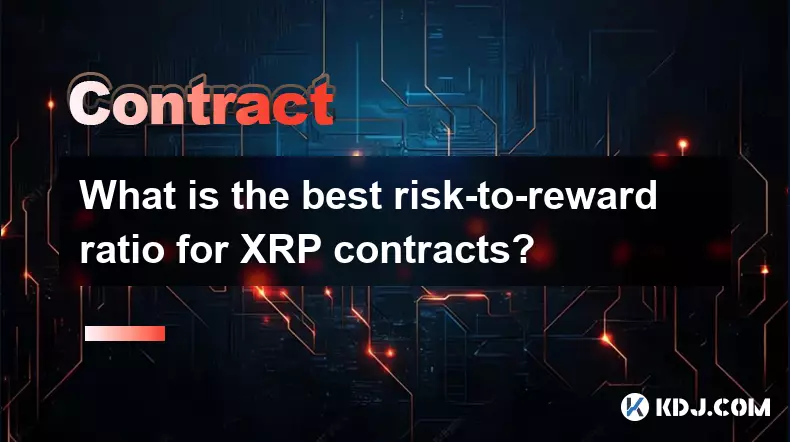
What is the best risk-to-reward ratio for XRP contracts?
Oct 11,2025 at 04:18am
Understanding Risk-to-Reward in XRP Futures Trading1. The risk-to-reward ratio is a fundamental metric used by traders to evaluate the potential profi...
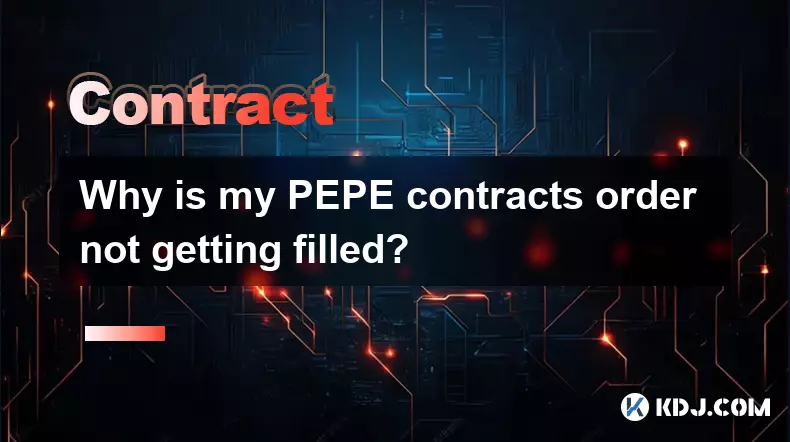
Why is my PEPE contracts order not getting filled?
Oct 12,2025 at 06:01pm
Understanding Liquidity Issues in PEPE Contracts1. Low liquidity is one of the primary reasons a PEPE contract order may not get filled. Many meme-bas...

Is it better to trade Dogecoin contracts or spot?
Oct 12,2025 at 04:54pm
Understanding Dogecoin Spot Trading Mechanics1. Spot trading involves the direct purchase and ownership of Dogecoin at the current market price. Trade...
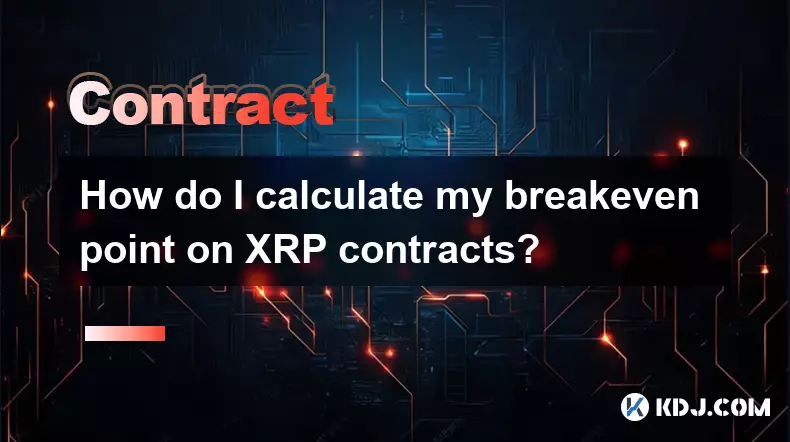
How do I calculate my breakeven point on XRP contracts?
Oct 09,2025 at 08:36pm
Understanding the Breakeven Point in XRP Futures TradingCalculating the breakeven point for XRP contracts is essential for traders who engage in futur...
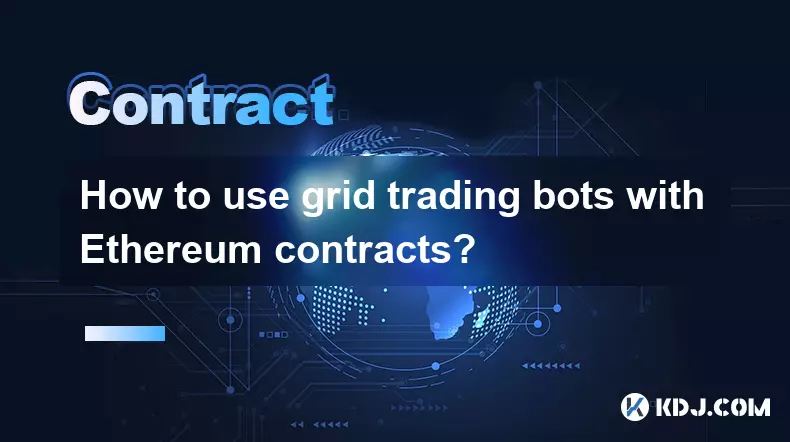
How to use grid trading bots with Ethereum contracts?
Oct 12,2025 at 05:01am
Understanding Grid Trading Bots in the Context of Ethereum1. Grid trading bots operate by placing a series of buy and sell orders at predetermined pri...

How to calculate the ROI for Ethereum contracts?
Oct 09,2025 at 04:36pm
Understanding Ethereum Contract ROI Basics1. Return on Investment (ROI) for Ethereum contracts begins with tracking the initial capital deployed into ...

What is the best risk-to-reward ratio for XRP contracts?
Oct 11,2025 at 04:18am
Understanding Risk-to-Reward in XRP Futures Trading1. The risk-to-reward ratio is a fundamental metric used by traders to evaluate the potential profi...

Why is my PEPE contracts order not getting filled?
Oct 12,2025 at 06:01pm
Understanding Liquidity Issues in PEPE Contracts1. Low liquidity is one of the primary reasons a PEPE contract order may not get filled. Many meme-bas...

Is it better to trade Dogecoin contracts or spot?
Oct 12,2025 at 04:54pm
Understanding Dogecoin Spot Trading Mechanics1. Spot trading involves the direct purchase and ownership of Dogecoin at the current market price. Trade...

How do I calculate my breakeven point on XRP contracts?
Oct 09,2025 at 08:36pm
Understanding the Breakeven Point in XRP Futures TradingCalculating the breakeven point for XRP contracts is essential for traders who engage in futur...

How to use grid trading bots with Ethereum contracts?
Oct 12,2025 at 05:01am
Understanding Grid Trading Bots in the Context of Ethereum1. Grid trading bots operate by placing a series of buy and sell orders at predetermined pri...
See all articles










































































